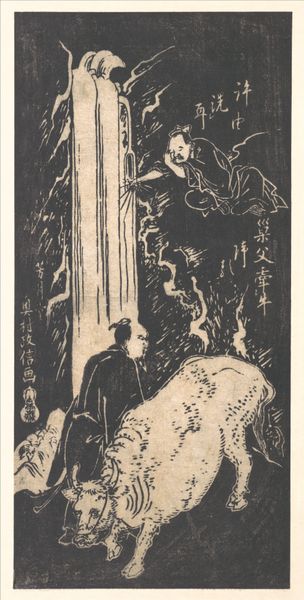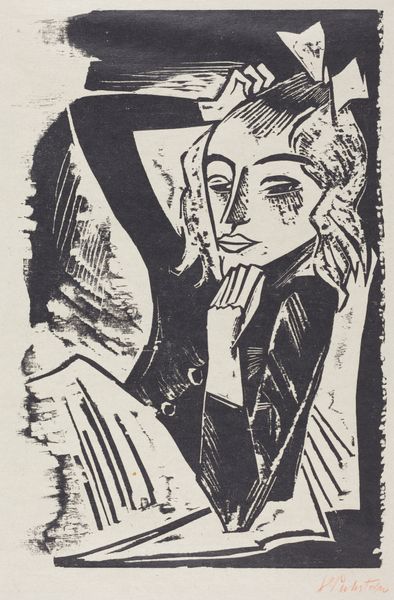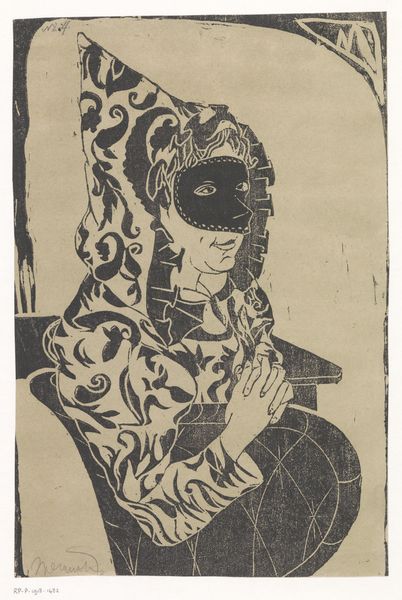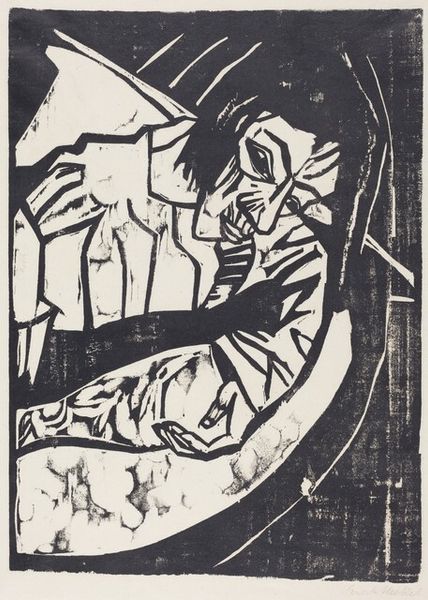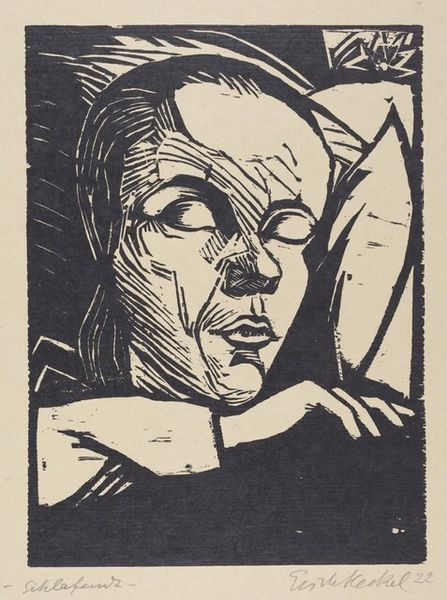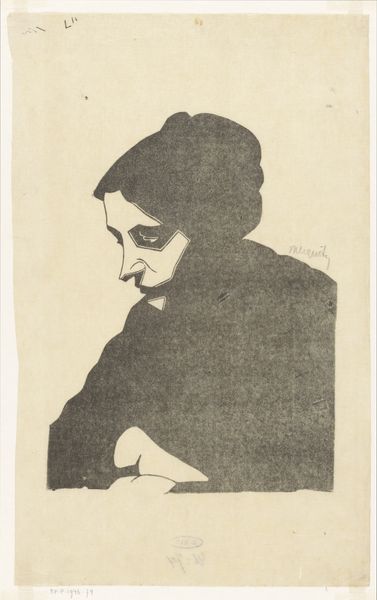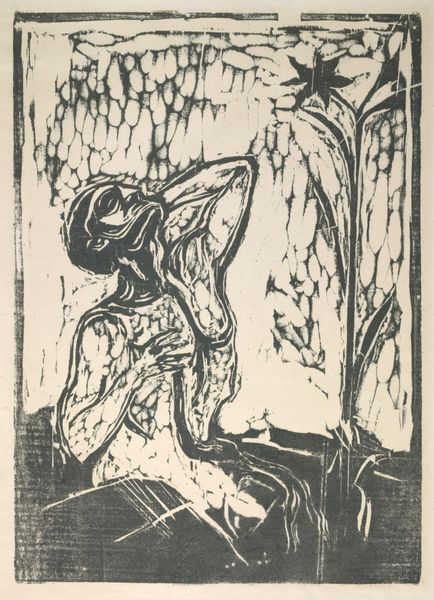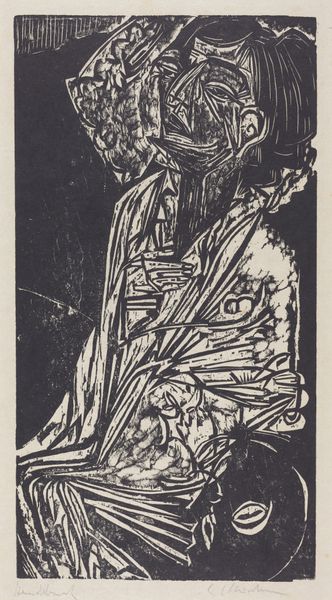
Die Komponistin Sonia Friedman (The Composer Sonia Friedman) 1920
0:00
0:00
print, woodcut
#
portrait
#
ink drawing
# print
#
caricature
#
german-expressionism
#
expressionism
#
woodcut
#
portrait drawing
Dimensions: image: 31.8 × 27.8 cm (12 1/2 × 10 15/16 in.) plate: 67.4 × 54.7 cm (26 9/16 × 21 9/16 in.)
Copyright: National Gallery of Art: CC0 1.0
Curator: Immediately, I’m struck by the tension in this piece, a weightiness communicated through the stark contrast and the downward gaze. It’s as if the subject is carrying the weight of the world, or perhaps wrestling with the act of creation itself. Editor: You’re picking up on something there. Let me introduce some background. This is Walter Gramatté's "Die Komponistin Sonia Friedman," a woodcut created in 1920. It captures the composer Sonia Friedman, and is a portrait with that raw edge we associate with German Expressionism. What materials and processes can you point to? Curator: Look at how Gramatté has carved the wood. See those rigid, almost violent lines? They form not just the portrait but a mood, a texture of emotional turbulence that surrounds the subject. The woodcut allows for a contrast—deep blacks versus bare paper—that creates drama. The work bears all the marks of labor – literally hand-carved! Editor: Absolutely. Considering that Gramatté was active during a time of great social upheaval in Germany, do you feel the piece reflects its moment? Curator: Very much so. The period was marked by hyperinflation, political instability, and the lingering trauma of World War I. I would interpret the harshness of the lines as mirroring the anxieties and frustrations of the time. There's a sort of protest in the way he attacks the wood, channeling this social distress. Friedman appears weary, reflecting the burdens placed specifically on female artists navigating patriarchal structures, compounded by the postwar environment. Editor: Interesting. Notice the positioning of her hands; folded, almost concealing a possible instrument? And the suggestion of her face, averted...this is about the physicality of music-making, surely. There's this sense of intense labour in creating under difficult conditions, both literally in terms of the work itself and symbolically relating to constraints upon creativity. Curator: Ultimately, for me, this is an important statement about the struggles that artists face, especially in times of great social stress. Editor: I agree; the sheer physicality involved points directly towards labour, inviting an exploration of art and identity through materials.
Comments
No comments
Be the first to comment and join the conversation on the ultimate creative platform.


